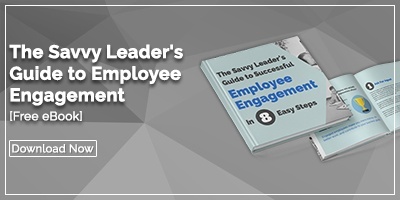 I've noticed something interesting in all articles and blogs I read about CQI (Continuous Quality Improvement). Most of the writing addresses how to launch a new CQI program for the organization, which is obviously essential. However, I've found less written about how to bake CQI into the onboarding process for new employees. After you've been doing CQI for a while, it will be second-hand nature for your existing team, but your new hire may have no experience with Kaizen or daily improvement.
I've noticed something interesting in all articles and blogs I read about CQI (Continuous Quality Improvement). Most of the writing addresses how to launch a new CQI program for the organization, which is obviously essential. However, I've found less written about how to bake CQI into the onboarding process for new employees. After you've been doing CQI for a while, it will be second-hand nature for your existing team, but your new hire may have no experience with Kaizen or daily improvement.
Here are some ways our customers have had success getting new team members ready to contribute to positive change right out of the gate.
Introduce Improvement Concepts During the Interview
Before you even bring someone on board, it's a good idea to test whether they have an aptitude for improvement and the willingness to learn. We recommend asking questions that help managers determine whether the candidate will fit into a culture of improvement and whether they will be willing to take small risks in hopes of achieving long-term value. For example, you might ask:
- Tell me about a time you had a creative idea for making your job better?
- What is your best experience receiving feedback about your work?
- How do you go about solving tough challenges?
- When have you made a mistake at work, and how did you recover?
Explain the Principles of CQI
Very early on in your employee's training, it is helpful to describe each of the principles of CQI and discuss them from the perspective of a new employee within your organization. Be sure to communicate that:
- Improvements are based on incremental, daily changes, not major paradigm shifts or revolutionary changes. This should be a comfort for someone who has just started a brand new job. They should know that it is expected that they will notice and report even the slightest opportunity to do things a better way.
- Ideas come from all employees. It is quite possible that in your employee's last position, it was expected that leaders would tell workers what should be done, never the other way around. It is crucial to correct this assumption from the beginning.
- Employees take ownership and are accountable for improvement. The ability to make suggestions for improvement should feel empowering to your new hire, but with that comes accountability. Be sure to explain what accountability and ownership look like in your organization.
- Improvement is measurable and potentially repeatable. Be sure to communicate that improvement is not just conceptual. Explain why your organization leverages tools that make it easy to capture the impact of progress, share collective wisdom, and spread improvement momentum.
Provide Examples with Data
Even if you do a great job of laying the foundation for your employee to embrace CQI, it helps to have real-world examples of exactly what that looks like. Spend some time reviewing past successful improvement projects and dive into the data that proves their success. This will help show them what is possible and how your team measures success. If your team has standard KPIs, it is helpful to introduce them early in the onboarding process, so the employee will know how their performance will be accessed.
Lay the Foundation for Standard Work
Standard work forms the basis for continuous quality improvement, so it is helpful to explain its role in your organization from day one. New employees should understand that team members create a set of current best practices for each process or task they operate. Then, the job is done to that standard until an improvement cycle results in a new sequence of events.
Explain What's In It For the Employee
When properly executed, quality improvement is beneficial to employees because it puts them in the position to do their best work. It also creates many opportunities to demonstrate leadership and resourcefulness. Be sure to be clear that the organization asks for employee ideas for improvement because they are of high value. Explain that each employee is uniquely positioned to spot problems and implement solutions related to the processes they operate.
Address Common Concerns Upfront
It is unlikely that your new hire will argue with you about the culture of quality improvement, but that doesn't mean that they have completely bought in. People are often suspicious of new concepts, and it's understandable if your new team member has a few concerns. So it makes sense to address a couple of them right at the beginning.
Many people are afraid that a process improvement program is designed to blame employees when something goes wrong. It helps to explain that the improvements are directed to processes, not people. In fact, finger-pointing is not helpful when trying to identify and correct the root cause of problems.
The other concern we hear a lot is that standard work means that there is no room for creativity. Of course, that's not the case at all. The standard simply provides the jumping-off point for managed change, which can be as innovative as employees can make it.
Introduce Your CQI Tools
Once you've laid the foundation for understanding CQI, it's time to get into the details of how it is implemented in your organization. You probably have a set of quality improvement process tools and techniques that require training, starting with your improvement management software platform. The training should not just be how to "point and click." It should include details about how the software is used to manage projects, conduct meetings, and structure employee reviews. It's helpful to have a training plan in place that covers your most essential improvement techniques, including PSDA or DMAIC, control charts, Kanban boards, and any other common improvement tools.

Although it doesn't make sense for every organization to have an ongoing, formal classroom-type CQI training program, some find it helpful to have formal training once every six months or so for all new team members. Even if that doesn't work for you, enlist some of your most engaged employees to help show new folks the ropes. Your investment in a solid onboarding program will pay off big when your new addition hits the ground running and contributes to positive change right away.




Add a Comment